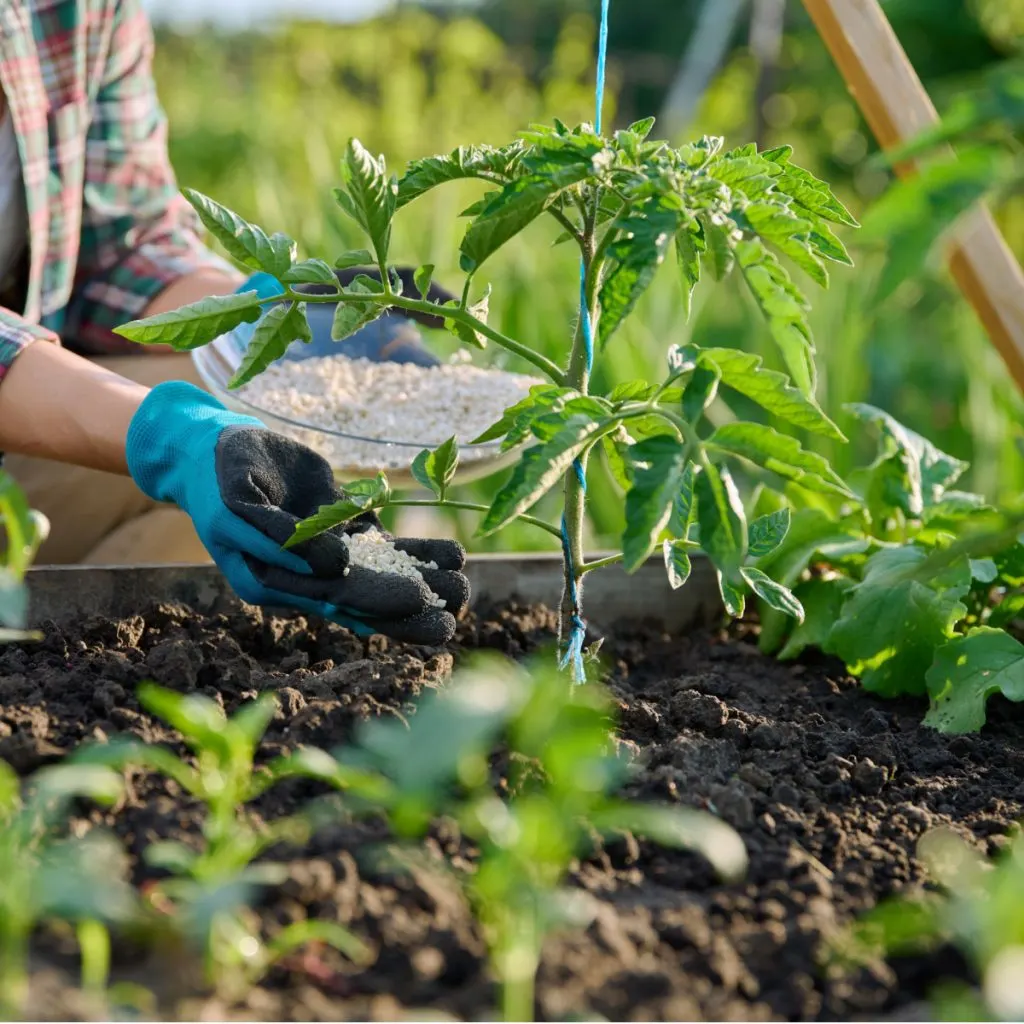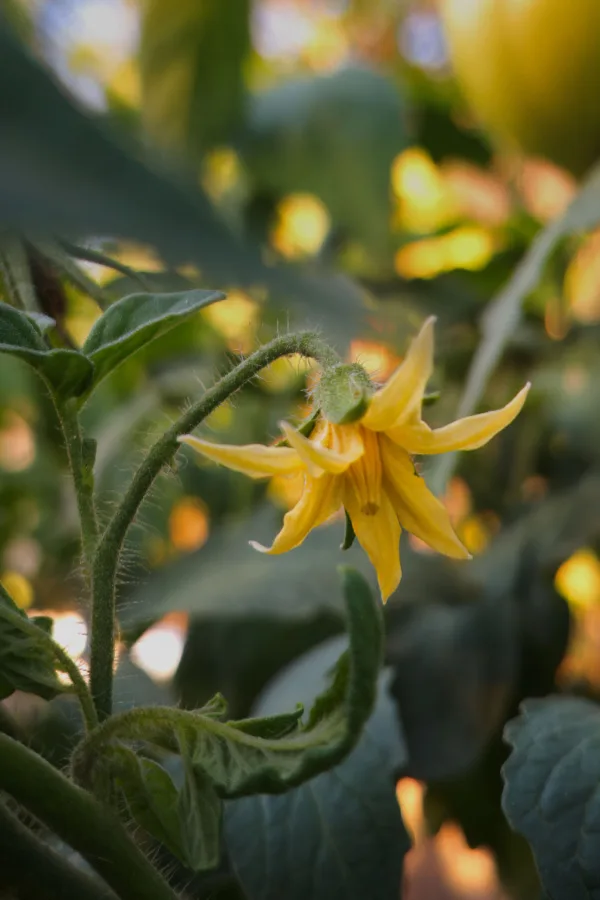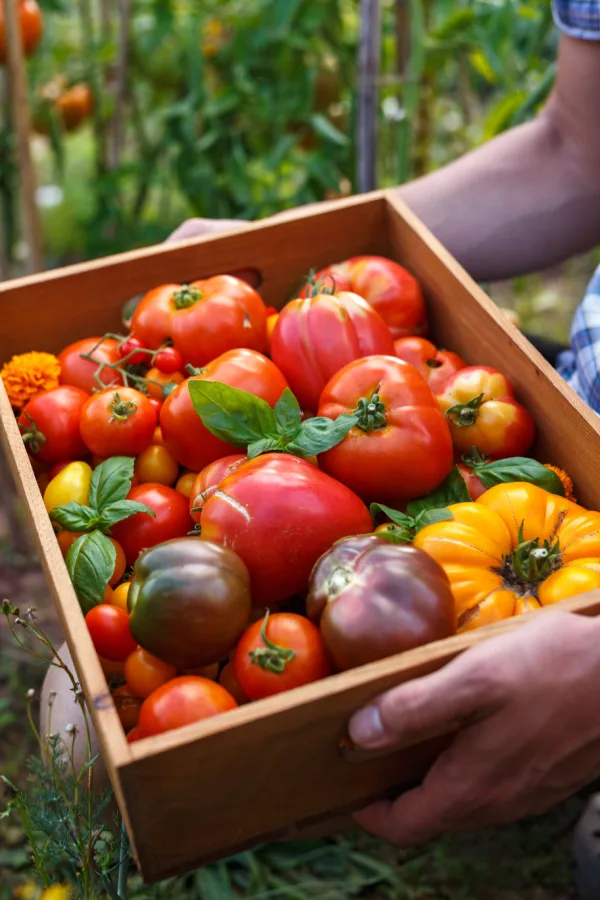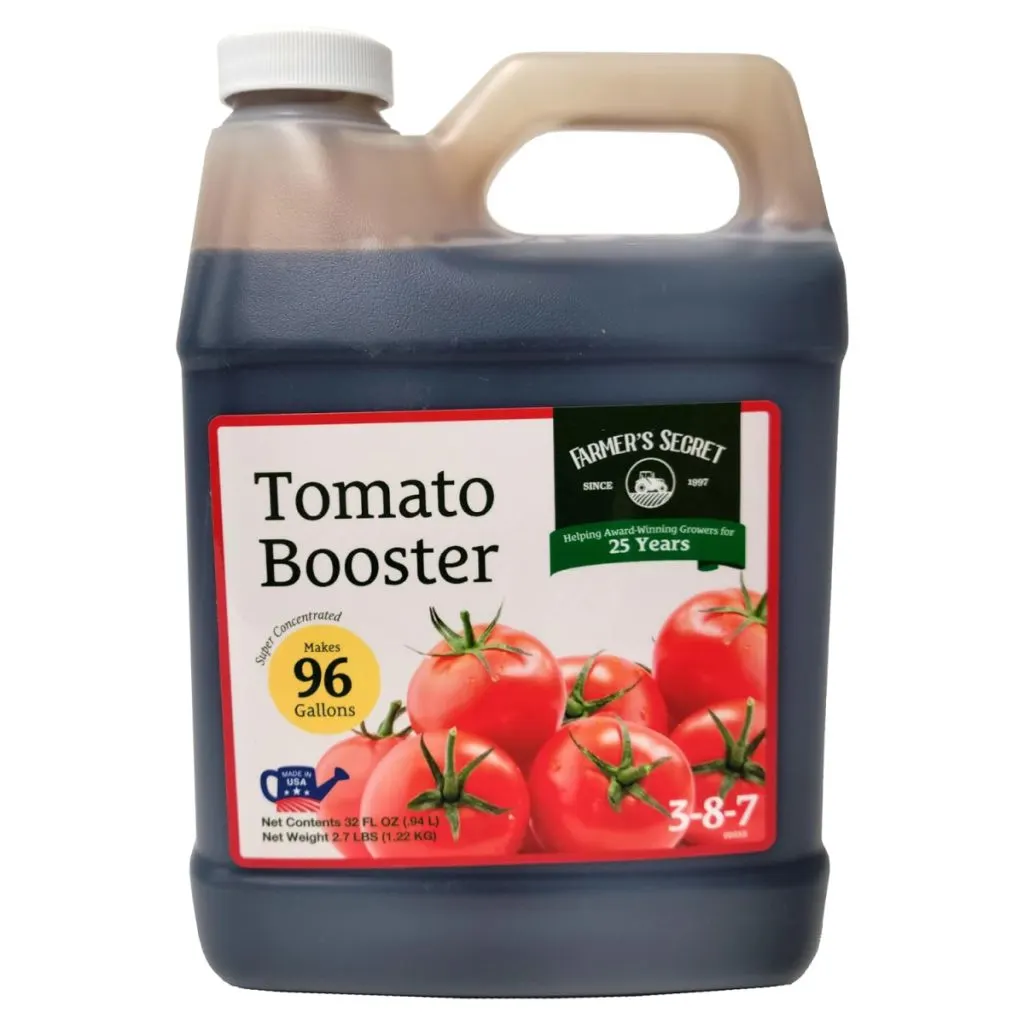Looking for the secret to fertilizing your tomato plants for big growth and an even bigger harvest this year?
When it comes to fertilizing your tomato plants with the perfect dose of power and energy, you might be surprised at what works best to produce incredibly healthy plants – and – a lot of tomatoes!
One thing is for sure, tomatoes are one of the heaviest feeders of all vegetable plants in the garden. Unfortunately, no matter how rich and fertile your soil might be at planting time, there simply are not enough nutrients available long-term to power maximum growth and production. Which is exactly why fertilizing your plants is a must!

But – and this is key – what you boost your tomato plants with, how much you give them – and how you apply your fertilizer are all just as critical for how successful your tomato plants will be when it comes to producing a big crop of juicy tomatoes!
The Secret To Fertilizing Tomato Plants
Getting The Right Balance Of Power For Your Plants
If you don’t give your plants enough of the right nutrients, they will struggle to grow and produce. On the other hand, give them too much power or too much of the wrong power all at once, and it can create massive plants that look ultra-healthy – but produce small yields or even no tomatoes at all!
Here is the good news – it’s not difficult to fertilize tomatoes. Nor is it hard to give them exactly what they need for optimum growth.
Along with the “BIG 3” of nitrogen, phosphorus and potassium, tomato plants need plenty of calcium, magnesium and a host of other micro nutrients to thrive and produce. But when it comes to the big 3 – phosphorus and potassium are actually far more important for tomatoes.
One of the biggest mistakes gardeners often make when fertilizing tomato plants is giving them too much nitrogen. Yes, nitrogen is important. It’s vital for helping grow thick stems and foliage. And that in turn helps the plant gain more energy through photosynthesis.

The Issue With Excess Nitrogen
Too much nitrogen is a bad thing for tomato plants. Yes, it gets them deep green and healthy looking. And yes, it grows them big. But when a tomato plant gets excess nitrogen, it uses it to only grow big. And at the expense of setting blooms and producing tomatoes.
That is exactly why when selecting a fertilizer, it’s better to have a higher phosphorus and potassium number. Why? Because phosphorus powers blooms – and blooms create future fruit! And the potassium helps the plant with health and water intake. Nitrogen, on the other hand, just grows the plant bigger.
We will cover more on specific fertilizer choices in a bit, but for now, it’s important to first cover the best method for delivering fertilizer to your plants. And for us, the only way to go is with liquid fertilizer!
Why Liquid Fertilizers Are The Secret To Success When Fertilizing Tomato Plants
For going on ten years now, we have used a very simple method for fertilizing our tomato plants. And it works equally well whether growing tomatoes in our main garden, or in our buckets and containers.
There are certainly a lot of choices for fertilizing tomatoes. In fact, from granular mixes, to powders, liquid concentrates and more, the selection can mind-boggling! But for us, especially when it comes to fertilizing tomatoes and other vegetable plants, liquid fertilizers are the ideal solution.
Listen In Below To Our Podcast On Powering Tomatoes With The Perfect Dose Of Fertilizer!
We have always been partial to liquid fertilizers for a few very important reasons. For one, nearly all liquid fertilizers can be absorbed in two ways, through the roots and through the foliage. And that double dose of goodness means plants get the energy they need fast.
Even better, however, is that they can be applied as part of your watering routine, giving the plants moisture and nutrients all at the same time. Here is a look at what we like to use – and the timing and strength of each dosage.
When To Fertilize
We like using a liquid fertilizer that has about two to three times the amount of phosphorus and potassium to nitrogen. For the last few years we have been trialing Farmers Secret Tomato Booster – and with its 3-8-7 NPK ratio, it has been ideal for powering blooms and tomatoes! Affiliate Link: Farmer’s Secret Tomato Booster Fertilizer (32oz) – Super Concentrated
Along with using the right fertilizer, knowing when to apply it and at what strength are the two final keys to growing a bumper crop of tomatoes. It’s better to provide your plants with a regular but light dose than just a few large applications of fertilizer.
Remember that steady growth is great growth and allows for more blooms and production. If you are using commercial liquid fertilizers with higher ratios, simply mix at half or one-third of the recommended strength before applying.
The lower dosage will keep plants from growing too rapidly. But, by applying every ten to fourteen days, it also keeps a steady supply of nutrients coming to the plants. Both of which are absolutely critical for growing tomato plants that produce!
Using Worm Castings For A Secret Boost Of Fertilizer For Tomato Plants
We do add one final secret weapon to our fertilizing routine – and that is a monthly addition of 1 cup of worm castings spread around the soil at the base of each plant. By doing this, every time we water or it rains, the power of the castings soaks down into the roots of the tomato plant.
Worm castings are another perfect, low and slow source of power. They will not overpower plants, but do they ever make a difference in keeping your tomato plants strong and productive. The monthly castings dose is the final amazing push of nutrients to our plants – and it works like magic! Affiliate Product Link : 100% Pure Worm Castings
How Long To Fertilize
It’s always important to allow your plants to establish in the soil a bit before fertilizing. For transplants, that means allowing them to adjust for about 10 days in the soil after planting day. If you happen to grow your plants directly from seed, allow the plants to grow at least 4 to 6 inches high above the ground before starting to fertilize.

Once established, plants should be fertilized every 10 to 14 days. When using a liquid fertilizer, it’s best to do so in the morning hours. This will keep the sun’s rays from burning any wet foliage.
We use about one-eighth of a gallon per plant for small transplants at first. As they continue to grow and develop, we increase the amount per plant to one-quarter to one-half of a gallon for each tomato plant. To apply, use one-third of each dose to water foliage, and the remainder around the root zone of each plant. For even more tomato growing tips, see our article: The Best Way To Water Tomato Plants When It’s Hot – How To Help Tomato Plants Handle Heat!
Here is to using the secret of liquid power when fertilizing your tomato plants this year – and to a bigger tomato harvest than ever! Happy Gardening – Jim & Mary
Old World Garden Farms
Jim and Mary Competti have been writing gardening, DIY and recipe articles and books for over 15 years from their 46 acre Ohio farm. The two are frequent speakers on all things gardening and love to travel in their spare time.
As always, feel free to email us at thefarm@owgarden.com with comments, questions, or to simply say hello! You can sign up for our free email list in the subscribe now box in the middle of this article. Follow us on Facebook here : OWG Facebook. This article may contain affiliate links.

